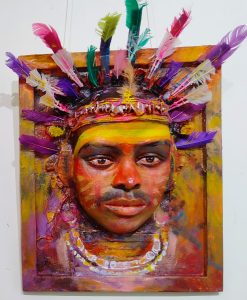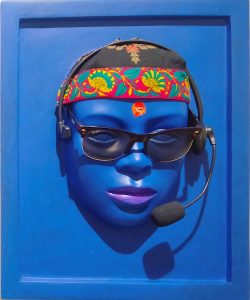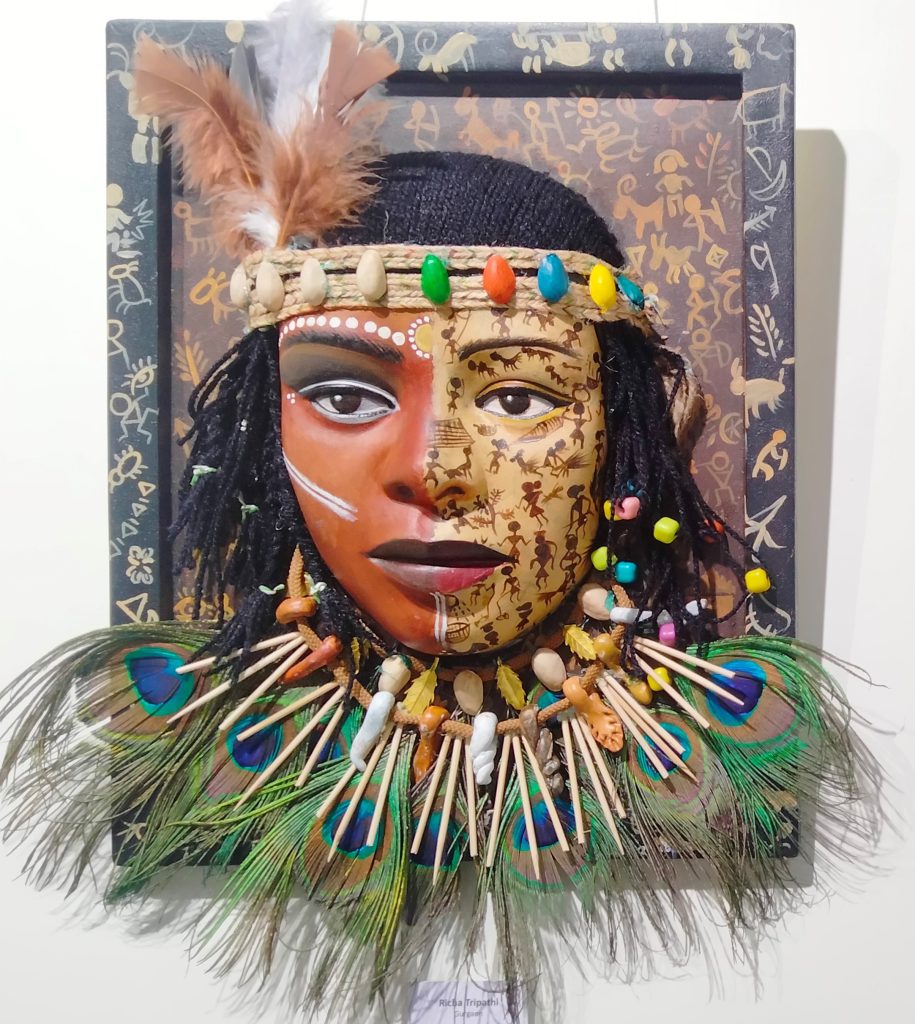Ved Prakash Bhardwaj
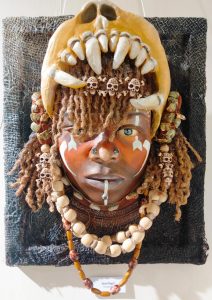
Mask or Mukhota or a fake face is a part of the life of tribal society. People in civilized society know this mask only as a decorative cover. We only know that masks are used in dance among tribals. There is nothing wrong with this information but it is very limited. The truth is that the mask is a part of all the religious and cultural activities of the tribal society. Making and wearing masks is a kind of ritualistic act for the tribal society. In the opinion of young artist Swati Goel, it is somewhere symbolic of their natural state, even their relationship with nature, and the golden aura of their inner selves. This symbol has been used by the Speaking Art Foundation as the basis for a contemporary arts festival titled Adivasi Indigenous Roots. The foundation had given masks made of fiber to about 100 artists, which the artists had created in their own way. An exhibition of these masks is going on these days at the Lokayata Art Gallery in Hauz Khas, Delhi, and will remain there until February 20, 2023. This exhibition is curated by artist Neeraj Sharma. All the masks included in the exhibition are fine examples of art. The artists featured in the exhibition include many senior artists like Prem Singh, Amit Dutt, Roop Chand, Ajay Sameer, Vilas Kulkarni, Anita Kulkarni, Madan Lal, etc.
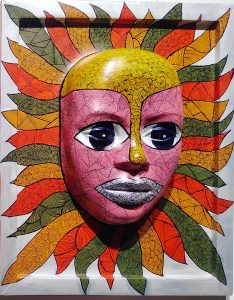
It is difficult to say when the man would have started making masks, but there is no doubt that the caveman had imagined it. Many of the cave paintings found around the world, including Bhimbetka in Madhya Pradesh, India, have structures resembling masks or similar shapes. Perhaps the man would have thought of the mask for the first time when he would have succeeded in killing animals that seemed to be stronger than him. It is also possible that, by wrapping the skin of that animal around his body and putting its face on his face, he would have gotten the feeling of having its power in him. And it is also possible that he did this first to scare other humans and animals and gradually it became a means of entertainment for him. This is probably the reason for the use of animal masks in tribal dances even today.
Masks, on the other hand, are present in modern and contemporary art as a result of their long cultural tradition. Modern craftsmen have created masks, sometimes independently and sometimes as a part of their craft. Many painters have also created masks on the face of the main character or in the background in different contexts in their paintings.
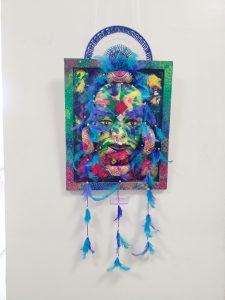
The aim of the artists behind the creation of masks in modern art is sometimes to bring out the inner personality of man and sometimes the artificiality of his personality. The mask is a symbol that is capable of expressing the both positive and negative personality of a person according to its use and context. Apart from art, in modern times we can see that not only in rural India but also in many places in urban life, people put a scary-shaped masks outside their houses to protect their houses from evil eyes. The scare crow seen in Indian farms is also a kind of mask. Masks are also used in Indian folk arts and many dance forms such as Kathakali. The wearing of masks by models is common in the fashion world, while in urban life it is customary to wear masks at parties of the upper classes. All these things mean that masks have an important place in the life of primitive man to modern man. That’s why when an exhibition comes out only with a mask; it needs to be looked at differently.
If you look at the masks included in the Speaking Art Foundation’s exhibition, many artists have worked like tribal masks by adding feathers, garlands, etc. to them. In this way, they have tried to take their masks closer to the original masks of the trials. Tribal masks are typically made of wood. In many tribal societies, the face is painted to give the impression of a mask. Making cloth or paper masks has been a practise in many civil societies. Thus, we can see that the materials used to make masks have varied in different societies. This can be seen in the masks included in this exhibition. These masks are made of fiber and are like 3D crafts. Apart from acrylic and oil paint, artists have also used enamel on this. Some of the artists have also used available material.
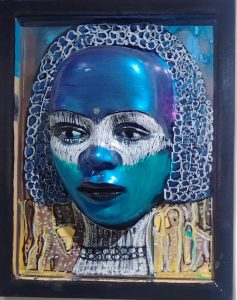
Each artist has a different theme. Some artists have highlighted the entry of modern resources into tribal life. An artist has added headphones and a microphone with goggles to the mask. This mask painted in blue is also a sign of the mask becoming fashionable in modern society. On some of the masks, the artists have also used the marking styles of tribal paintings. The efforts of the artists have been to bring out the cultural heritage of the tribal society. Some masks have also pointed towards environmental and ecological crises through birds, flowers, leaves, etc.
One of the specialties of these masks is that the artists have freely expressed the social and cultural status of the tribal in their own way. For this, the artists have also used many other materials on the given fiber mask. These materials include pieces of cloth, plastic flowers and butterflies, pieces of hessian paper, prayer beads, beads, shells, and so on. Using these materials, the artists have transformed the masks into expressions out of the ordinary. There have been earlier exhibitions regarding masks as well, but the Speaking Art Foundation’s exhibition is different. Like last time, this time also this organization has worked on a theme which is a good thing.